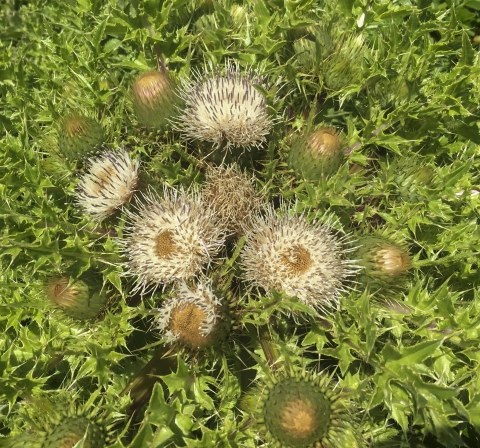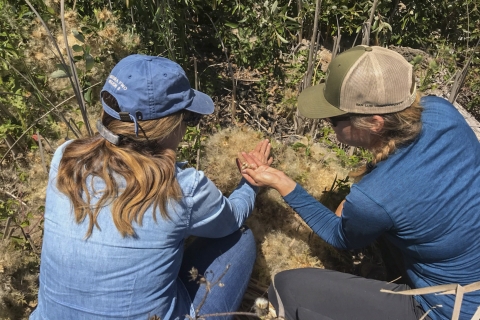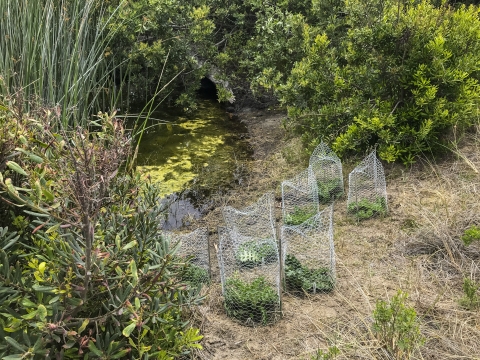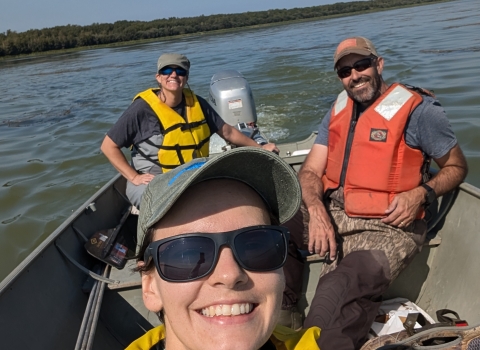By Ashley McConnell
La Graciosa thistle (Cirsium scariosum var. loncholepis), a spiny wetland plant with white flowers tinged with a lavender hue, now has a blueprint for recovery, thanks to a draft plan prepared by the U.S. Fish and Wildlife Service and partners.
The endangered thistle lives around the edges of wetlands and riparian riparian
Definition of riparian habitat or riparian areas.
Learn more about riparian areas within coastal dune scrub habitat. It is currently found in only eight locations scattered throughout the iconic Guadalupe-Nipomo Dunes in southwestern San Luis Obispo and northwestern Santa Barbara counties along the Central Coast of California.
Conservation experts say the primary threat to the species is groundwater decline, likely from extraction for urban, agricultural and industrial uses. Climate change exacerbates this threat as drought conditions simply means less water is available.
“The recovery plan outlines specific actions to protect and enhance viable or self-sustaining populations of this thistle throughout its geographic range,” said Kristie Scarazzo, botanist for the Service in Ventura, California.
Recovery plans are required for endangered wildlife and plants protected under the Endangered Species Act, and are often developed in collaboration with academia, landowners and conservation groups that can help implement on-the-ground recovery actions.
Partners contributing to the plan include California Department of Parks and Recreation, Trihydro Corporation, Dunes Lakes Limited, Land Conservancy of San Luis Obispo County, Coastal San Luis Resource Conservation District and California Polytechnic State University, San Luis Obispo.
“The Guadalupe-Nipomo Dunes, and the species it supports, are a high priority for conservation, and we are glad to be part of their protection,” said Lindsey Roddick, senior restoration ecologist with the Land Conservancy of San Luis Obispo County. “While La Graciosa thistle is only one plant, it is an important spoke in the coastal ecosystem wheel.”
Conservation partners are already working to implement actions identified in the plan such as restoring habitat by removing invasive weeds, sediment and overgrown vegetation to La Graciosa thistle propagation and planting.
The Service provided funds to the California and Santa Barbara Botanic Gardens to establish conservation seedbanks for La Graciosa thistle that serve as backup in the event of catastrophic loss. “This way, if all known existing occurrences disappeared, we have a safety net to propagate seeds and return them to their habitat,” Scarazzo said.
The Land Conservancy of San Luis Obispo County began growing seeds in 2020, and for a second consecutive year, will plant La Graciosa thistle at the Guadalupe-Nipomo Dunes National Wildlife Refuge, a safe haven for rare plants and wildlife. Sixty-five thistles will be planted at the end of June 2021.
“Plants that went in the ground in 2020 successfully flowered and produced seeds, and we now have a second generation emerging, which is exciting because our methods worked,” Scarazzo said.
Roddick says she looks forward to getting many more plants in the ground.
On a former oil field adjacent to the Refuge, neighboring landowner Chevron has implemented extensive remediation activities. Those include removing invasive veldt grass (Ehrharta calycina) and propagating and planting La Graciosa thistle in an effort to restore the landscape to what it looked like prior to the veldt grass invasion.
“Chevron is an exemplary model of what’s possible with the right amount of resources and commitment," said Scarazzo.
Those successes are being replicated at the Land Conservancy’s Black Lake Ecological Reserve with funding from the Service’s National Coastal Wetlands Grant program. A $584,909 NCWC grant will support the Land Conservancy’s efforts to remove invasive and overgrown vegetation, accumulated sediment and recontour wetlands to optimize hydrologic function. That work is expected to begin in 2023.
With recovery actions underway, Scarazzo is optimistic about the future of this rare endemic plant. "We have a dynamic and innovative team committed to the species recovery. We can’t change the weather, but through active management, we can maximize the hydrologic function of the habitat and help restore the ecosystem processes that this plant depends on.”
According to Scarazzo, species recovery and other land uses are not mutually exclusive endeavors.
“We’re not saying stop agriculture or stop residential development,” she said. “We absolutely want that kale, we want those strawberries. We also want the rare plants that are part of the natural history and biodiversity of this remarkable part of the world to thrive.”







